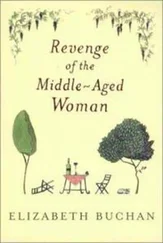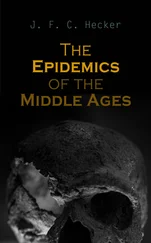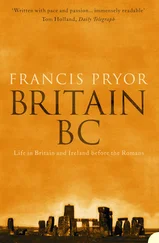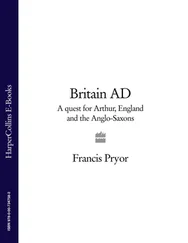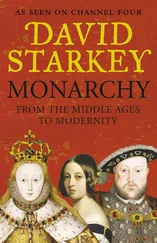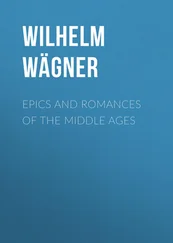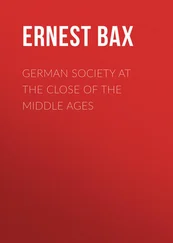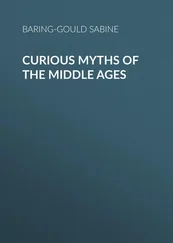The colourfully misnamed Dark Ages mark a return of sorts to prehistory, so far as the archaeologist is concerned. During the half century or so of post-Roman times and the subsequent Early Saxon Period (AD 450–650), reliable written documents are rare, and provide us with far less information than the abundance of new archaeological discoveries, whose sheer quantity today is almost overwhelming. Whether or not you accept the argument of Britain AD, that the indigenous population of Britain did not fall victim to Anglo-Saxon ‘ethnic cleansing’, as the distinguished historian David Starkey suggested in the first episode of his television series Monarchy (2004), it is hard to deny that archaeology is revealing a huge amount about Dark Age Britain. But what about the subsequent periods: does archaeology have a role to play in times when documentary evidence becomes more abundant?
There was a rapid increase, indeed ‘explosion’ would scarcely be an exaggeration, of written documentary sources in the mid-thirteenth century. These documents are mainly about day-to-day transactions, to do with trade, dwellings and land tenure. They are of enormous importance to the study of the way people lived their lives, in both town and country. But do they allow us to paint a full picture of life in the Middle Ages? The archaeologist Paul Stamper thinks not: ‘traditionally, few historians exhibited any interest whatsoever in material culture, whether it be the layout of a village’s fields, the design of its houses, or the range of their contents. That was especially so with regard to peasant society, which was assumed to be (in every sense) rude, crude and unworthy of scholarly investigation.’ He then explains that most historical records are ‘terse, factual memoranda’. They throw little light on how or why certain things took place. ‘Archaeology’s ultimate access to a much larger dataset, and to one with a degree of detail denied to the historian, makes the investigation of explanation far more feasible.’ 3
It is generally believed that day-to-day documents, such as deeds or records arising from other transactions, are by their very nature reliable; but as a farmer who has to deal with the welter of impossibly long forms and other bureaucratic nonsense that has recently sprung up, I have my doubts: this modern documentation can tell a cautionary tale that is relevant to history. Recently the government told farmers that it was illegal to bury dead animals. In future, they announced, all fallen stock was to be disposed of by licensed operators, who would burn the carcasses. This procedure would be accompanied by appropriate and abundant paperwork. But typically of what so often happens today, no practical provision was made for the collection of carcasses. Licensed operators were hard to find, or were miles away. Like other farmers, I tried to follow the new law, but became disgusted by the stench of rotting flesh as a dead animal decomposed for a week in the June heat while it waited for collection. So I buried it. And I may even have buried a few more. The point is that for several months most farmers did what I did – since there was no other option. But my farm paperwork gives no hint that this was happening, because I have no wish to incriminate myself. However, in a hundred years’ time an archaeologist digging in my wood could tell from the ear tags on the dead animals that I was breaking the letter of the law. So the documents would say one thing and the archaeology another. And I know which one I would trust.
I do not want to become embroiled in an unconstructive argument between archaeologists and historians, because I believe their two subjects are slowly becoming closer. But wherever possible I will try to make use of those comparatively rare individuals, such as Colin Platt, Tom Williamson, Paul Stamper and Chris Dyer, who seem equally at home in both worlds. I also like the work of historians with a breadth of vision, able to deal effortlessly with great expanses of time and space. For me Jacques Le Goff is just such a historian, and his recent book The Birth of Europe has helped me see the wood through the medieval trees. 4 It is also perhaps worth noting that certain historians still seem to be oblivious – sometimes even comfortably oblivious – to the existence of archaeology. I console myself with the thought that as time passes they will have to change.
I have spent over thirty years excavating sites of the last five millennia BC and the first millennium AD, mostly in eastern England. In the course of this work I have taken a long view of the past. This extended perspective partly reflects the imprecision of current dating methods – for example, radiocarbon dates are often accurate only to two or three centuries – but it also results from theoretical approaches that have been adopted by prehistorians since the 1960s. In the last four decades of the twentieth century prehistorians became less interested in one-off events and turned their attention to the gradually evolving processes of social change.
There was also a move away from a straightforward, or functionalist, view of the past. This new approach laid greater emphasis on the roles of symbolism, ritual and structure within the processes of change. Other post-modern approaches have been highly influential. Archaeological evidence, for example, lends itself readily to deconstruction. The result has been a long-term or strategic overview of the past which non-specialists find appealing, because it is often relevant to current issues, such as the development of political authority or the role of religion within society. I think these are positive trends, because archaeology must be relevant to modern life, or it will not survive for long.
It would perhaps be useful if at this stage I gave an indication of my long-term view of the human past. I will take an essentially British perspective. The story begins with Prehistory, which can be subdivided into three: Early Prehistory, being everything from the arrival of the first humans about half a million years ago until the appearance of Homo sapiens , around 40,000 years ago; Middle Prehistory ends with the introduction of farming about 5000 BC, or slightly earlier; Late Prehistory extends through the Neolithic and most of the Bronze Age, until the early first millennium BC, after which we are in the Iron Age and the next of my three main periods, Antiquity.
In Britain and France, Early Antiquity ends with the arrival of the Roman Empire, but in north-western Europe outside the Roman Empire there is a seamless transition into Middle Antiquity in the early centuries AD. Late Antiquity starts in the latter part of the Roman period and ends sometime around 600–650, when major social, economic and political changes begin to happen.
The last of my three eras is the Modern Period. Its Early phase starts in Britain around AD 650 with the start of the Middle Saxon period. This was a time of rapidly growing trade networks and the emergence of the first early medieval European states. Soon we have the establishment of the first true post-Roman towns. It ends around 1350 with the Black Death (1348). The Middle Modern or ‘Transitional’ Period ends around 1550, the date that most archaeologists regard as the close of the Middle Ages; this book will be about the Early and Middle Modern periods, as defined here. The Late Modern Period starts around 1550 and extends until the present. I should also add here that I regard currently fashionable attempts to define a new ‘post-industrial’ era as being premature. We are far too close in time to view our culture with any clarity at all. Maybe historians in a hundred years’ time will have acquired suitable perspective. Maybe.
| Period |
Start Date |
Events |
| Early Prehistory |
500,000 years ago |
Humans in north-western Europe |
| Middle Prehistory |
40,000 years ago |
First Homo sapiens |
| Late Prehistory |
5000 BC |
Farming introduced |
| Early Antiquity |
750 BC |
Iron and the Iron Age |
| Middle Antiquity |
100 BC |
The Roman Empire |
| Late Antiquity |
AD 300 |
Post-Roman times |
| Early Modern |
AD 600–50 |
Carolingian Empire Arab Empire. Early Middle Ages |
| Middle Modern (or ‘Transitional Period’) |
AD 1350 Black |
Death, Later Middle Ages, Reformation |
| Late Modern |
AD 1550–present |
Industrial/agricultural ‘revolutions’ etc. |
I described how I would divide up my ‘long view’ of the human past because it provides at least partial justification for why I do not regard the Middle Ages as being ‘Middle’ at all. The term was first used in the Renaissance to describe the period between the Classical world and that of the Renaissance. This was a perspective which viewed that Classical world through modern eyes. That way of looking at the past has little or nothing to do with hard historical or archaeological reality. It has more to do with value judgements about art, literature and knowledge than the development of human culture or society.
Читать дальше


